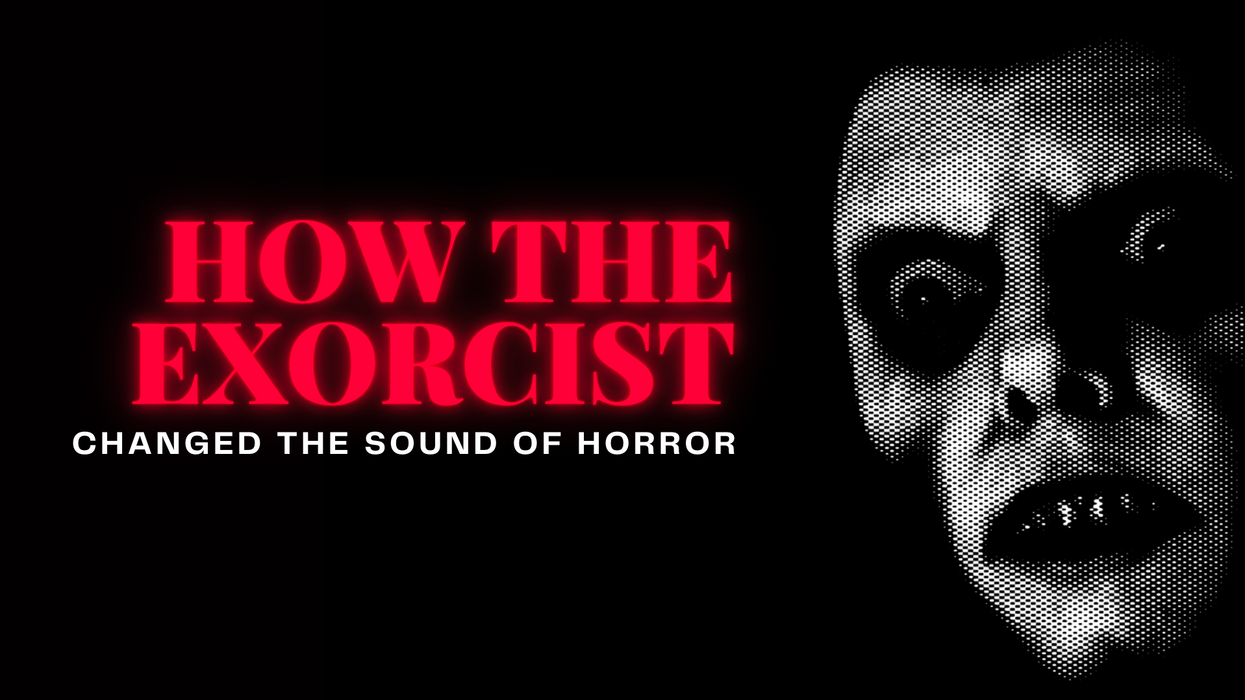How 'The Exorcist' Changed the Sound of Horror
Ever notice how lots of horror scores sound the same?

You know the tune. High strings, metallic creaks, a tempo that ranges from anxiously fast to dreadfully slow. These are just a few elements of our favorite horror movie scores.
In PBS’ Sound Field, musicians LA Buckner and Nahre Sol explore music theory and history. In this episode, they look at the influence of Polish composer Krzysztof Penderecki and the use of his music in the horror classic The Exorcist, which went out to shape the soundscape of an entire genre.
Click through to watch the video, then enjoy our takeaways.
When horror began
In the early days of silent films, music was often left out or left up to whatever the theater's in-house musician wanted to play, usually classical tunes. (Charlie Chaplin, ever the perfectionist, was unique in that he often selected or composed music specifically for his silent films.)
Robert Wiene's The Cabinet of Dr. Caligari was one of the first horror films to have an original score. And it bothered viewers. King Kong was the first feature-length talkie to get original music, setting the standard for scores that reflected action on screen and signaled the appearance of monsters.
Enter the "leitmotif." Defined as a "melodic phrase or figure that accompanies the reappearance of an idea, person, or situation," the leitmotif is what you hear when the shark appears in Jaws or when James Bond swaggers across the screen. In the case of Jaws, the two notes get louder and faster the closer the shark gets to the heroes. It's incredibly effective. Genius, even.
In the time of Universal's classic monsters, the musical themes were fairly heavy-handed. The music would get loud when you were supposed to be scared, and sad or melodic during the serious parts.
The stinger chord
You know what a "stinger chord" is, even if you can't define it.
Norman Bates whips back the shower curtain, knife raised. Bernard Herrmann's iconic high, shrieking strings kick in.
That's a stinger chord.
According to David Neumeyer's Film Music Analysis and Pedagogy, a stinger chord is "a sharply attacked, but not necessarily loud, chord used to reinforce moments of surprise or revelation."
These chords are so effective, Buckner says, because "they manipulate the deep-rooted fear centers in our brains."
They sound like screams.

The music of The Exorcist
The Exorcist is a movie that works on multiple levels to scare you, start to finish. But a major element that pushes fear on an audience is its music. Director William Friedkin pulled from Polish avant-garde composer Krzysztof Penderecki's 1961 "Polymorphia" for the film.
This music is spine-tingling. It sounds like fingers on your back, spiders crawling on the walls, footsteps in another part of the house. It's perfect. Penderecki used musical tools like "tone clusters" and "sound masses," which often resulted in haunting, discordant groups of notes.
Penderecki didn't originally compose these pieces for movies, but instead was exploring the horrors of his own past experiences in World War II.
You probably know more of his music than you realize. He was also used in Kubrick's The Shining.
Want to create your own horror music?
If you're about to start creating your own horror score, get comfortable with terms like "dissonance" and "tritone." Dissonance creates chords filled with tension. Some people even call this "the devil's chord."
Try repurposing music in creepy ways. You'll often hear children's nursery tunes or rhymes playing over haunting scenes. Or what about in Silence of the Lambs, when Lecter is listening to Bach as he kills two security guards?
You can have your musicians play their instruments in extreme ways. Ask for "sul ponticello," close to the bridge, for a timorous sound on string instruments. You get that high, ghostly noise common to horror music.
Or can you use instruments to mimic characters or the environment? Can an instrument be a breath, a heartbeat, a footstep? Maybe you don't even have to use traditional instruments. Hans Zimmer will modify almost everything he's given or pull a broken piano out of a garbage heap for a unique sound. Bang on trashcans, embrace electronic feedback, find unique ways to get dissonance. Experiment!
Now. Is it too early to celebrate Halloween?
What are your favorite horror scores? Leave some recommendations in the comments.
Source: PBS













